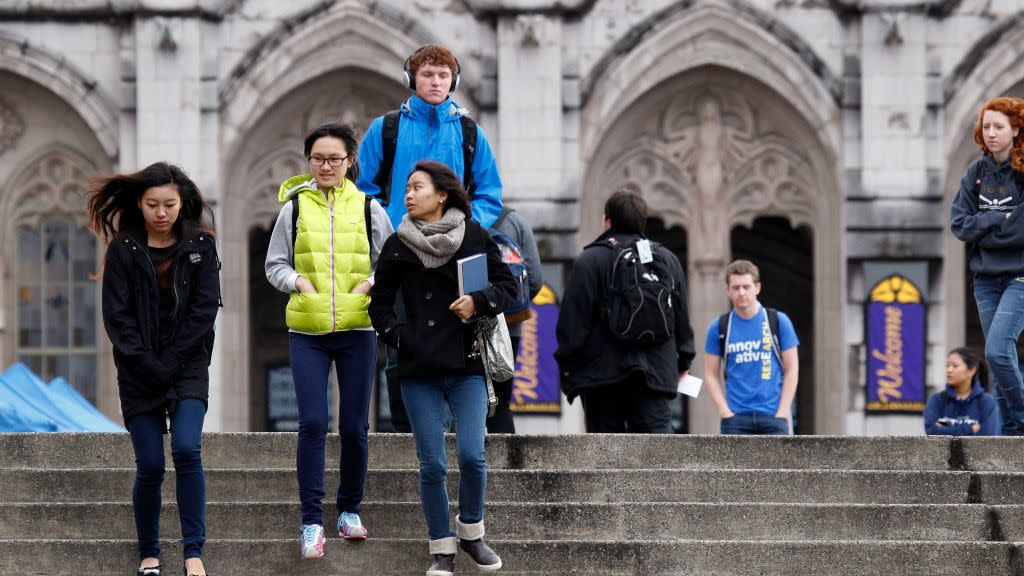Foreign students continue to turn away from US universities

Last year wasn’t a fluke. The US has lost its appeal to international students.
The US issued visas to less than 400,000 international students in fiscal year 2017. That’s a 17% decline from 2016, and a 40% drop from 2015.

The decline in student visas issued makes it seem like there’s a dramatic decline in international students in the US. That’s a bit misleading. A US policy change in 2014 allowed Chinese nationals to renew student visas once every five years instead of every year. The result has been fewer annual applications from Chinese students, who make up about a third of the foreign-student population in the US.
Enrollment figures give a clearer picture than do numbers of student visas issued—but the decline is there, too. According to a survey conducted by the Institute of International Education, enrollment of first-time international students fell an average of 7% in fall 2017 from a year ago across 522 US institutions.

One contributing factor to the decline is the drop in Saudi Arabian students. The Saudi government cut funding for international-education scholarships in 2016 after a year of low oil prices, resulting in a 14% drop in the number of incoming students from the prior year. Saudi nationals were the fourth-largest group of foreign students in the US in 2017.
Another factor: US universities are getting more expensive. Facing deep state budget cuts and legislative protection for local students, some major public universities increased tuition for international students to raise revenue.
The current US political climate makes the situation even worse. A number of policies instituted by the Trump Administration, ostensibly aimed at protecting Americans, have barred international students from entering the country. A majority of US academic institutions cited visa issues as the top reason for enrolling fewer international students in fall 2017.
As of March 2018, there were 0.5% fewer F-1 and M-1 visa holders–a measure for the number of foreign students enrolled in academic and vocational programs–in the US than a year ago. Though slight, it’s the first decline since the 2008 recession.

The international demand for higher education hasn’t gone away. It moved elsewhere. Other English-speaking countries saw their numbers of international higher-ed students rise. More international students applied to universities in Canada, Ireland, Australia, and the UK—despite Brexit—in 2017 than in 2016. The US is the outlier.
Sign up for the Quartz Daily Brief, our free daily newsletter with the world’s most important and interesting news.
More stories from Quartz:


